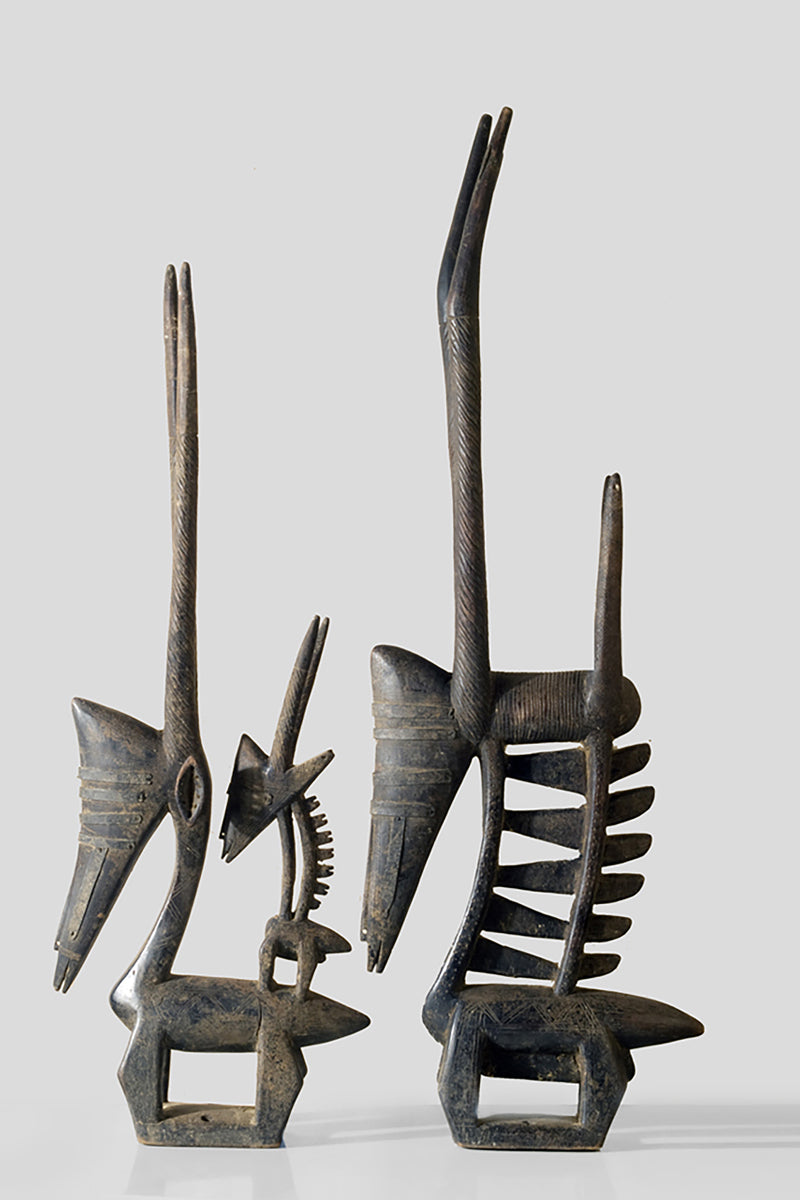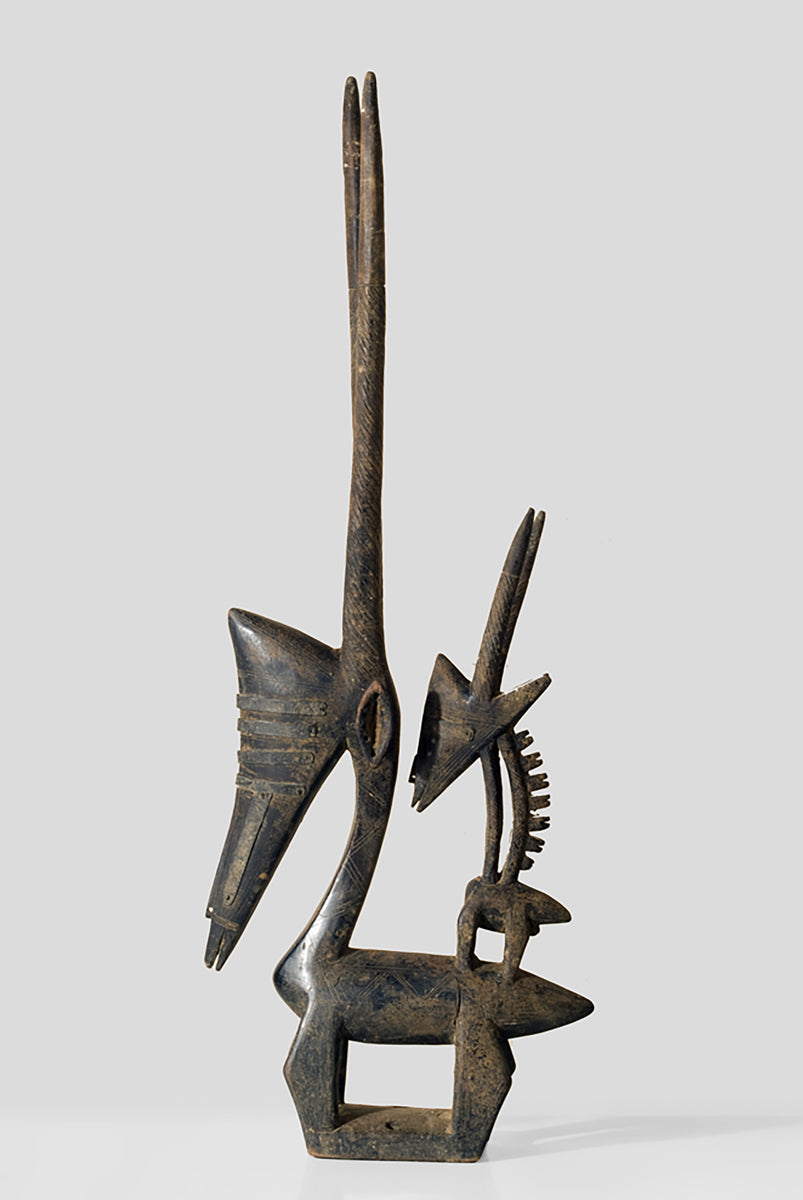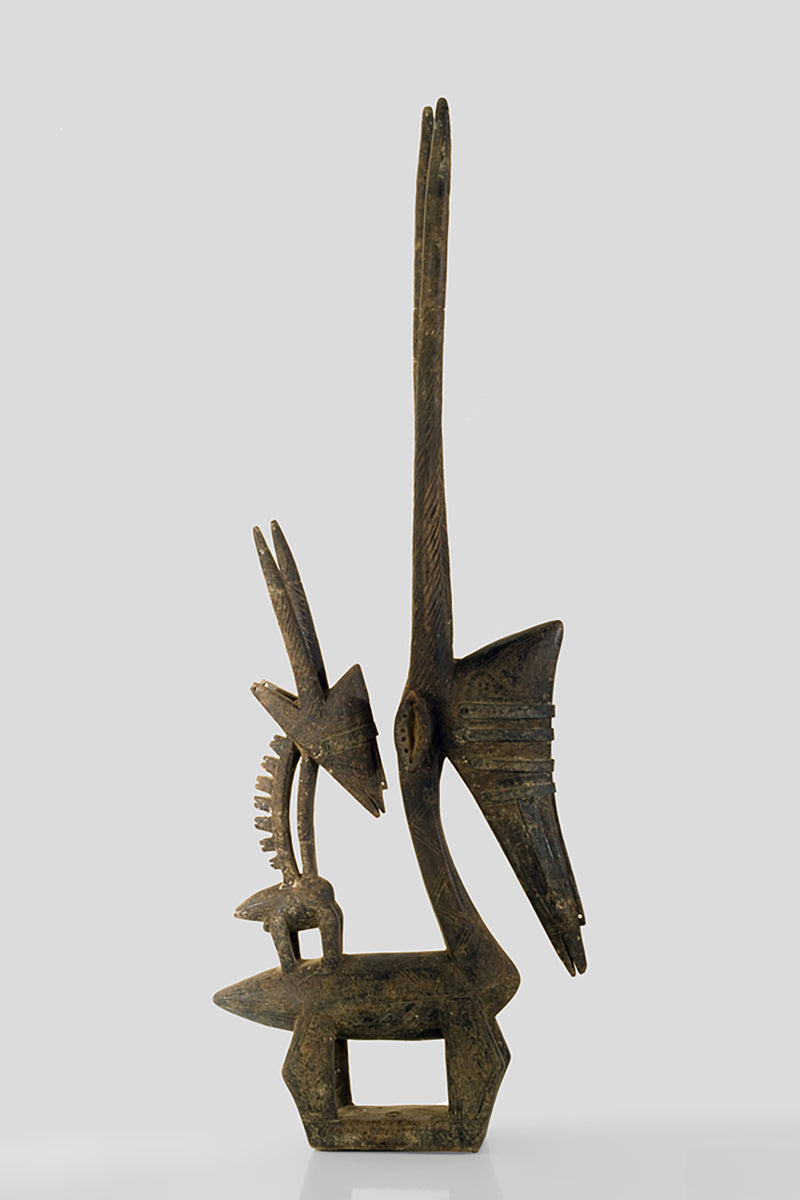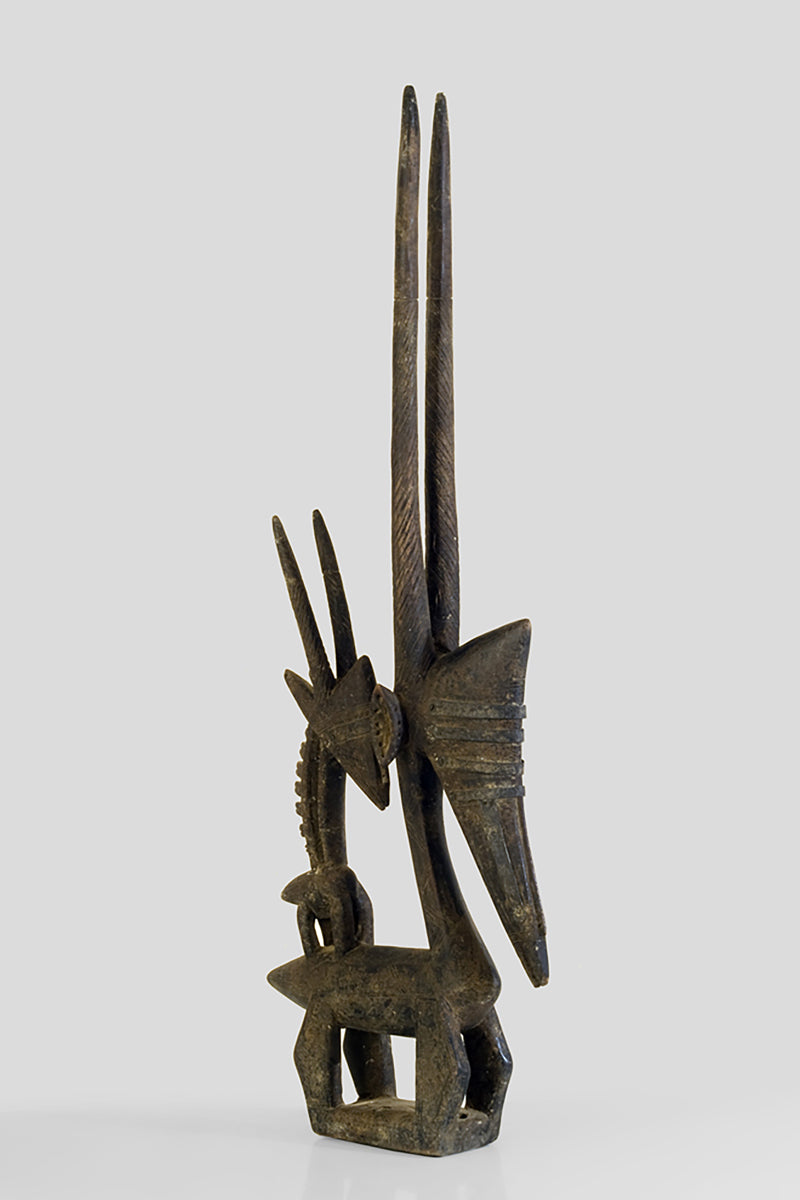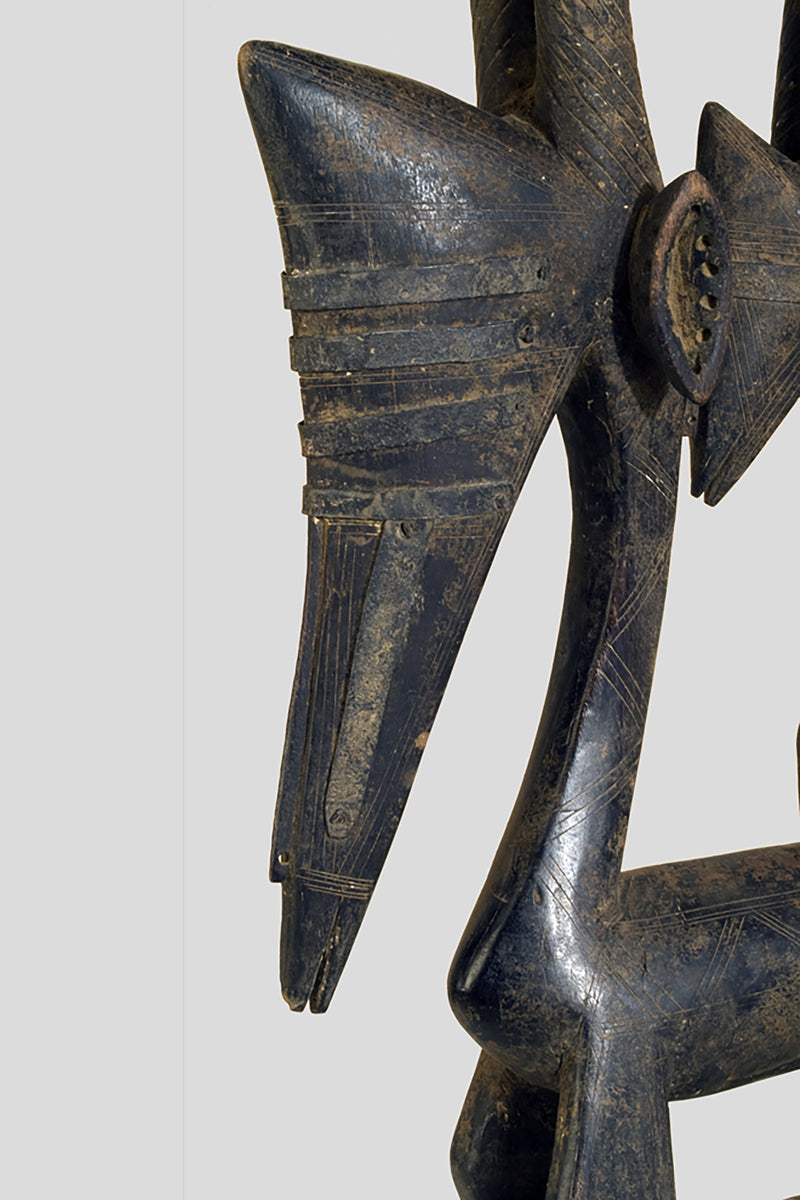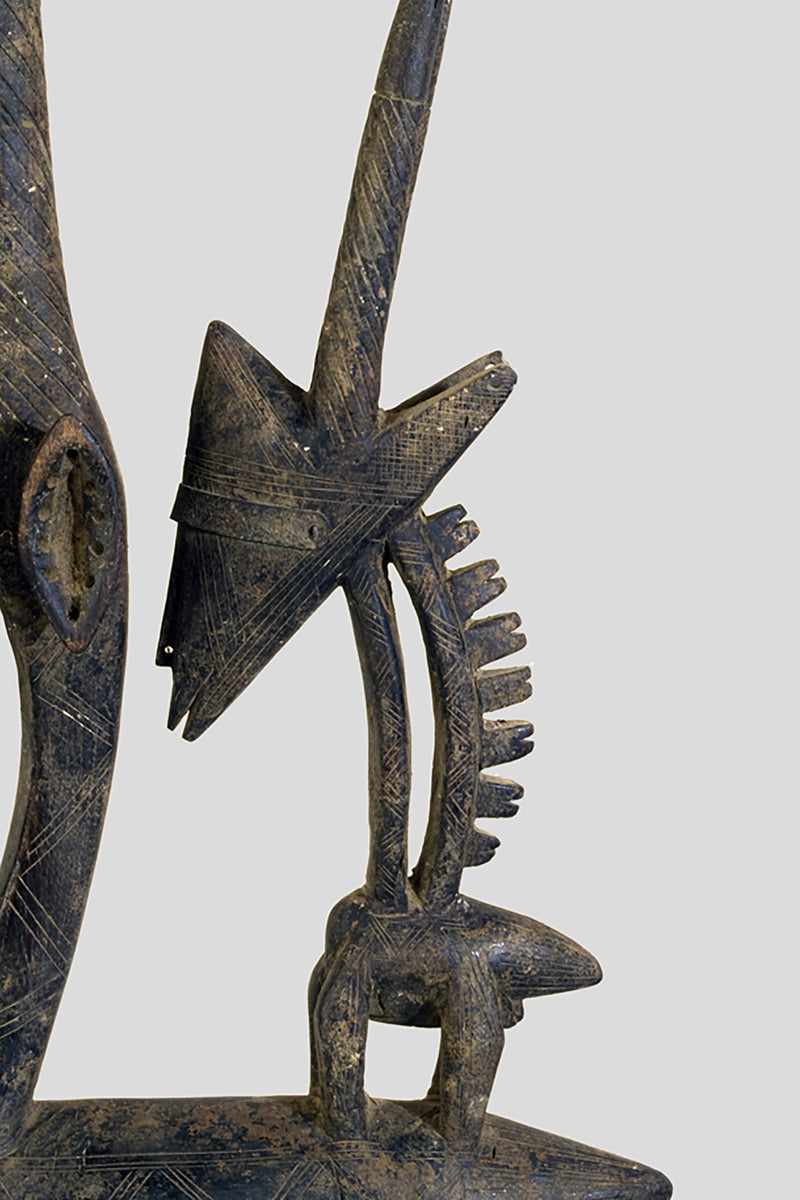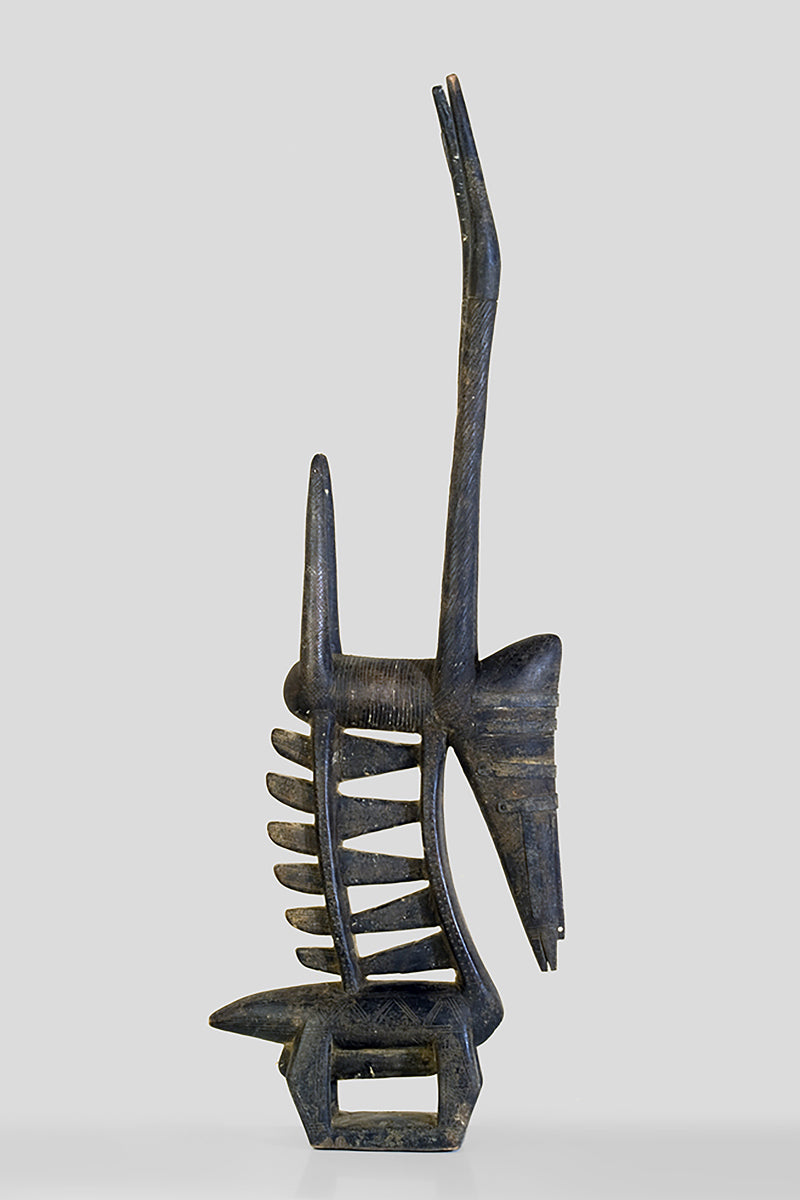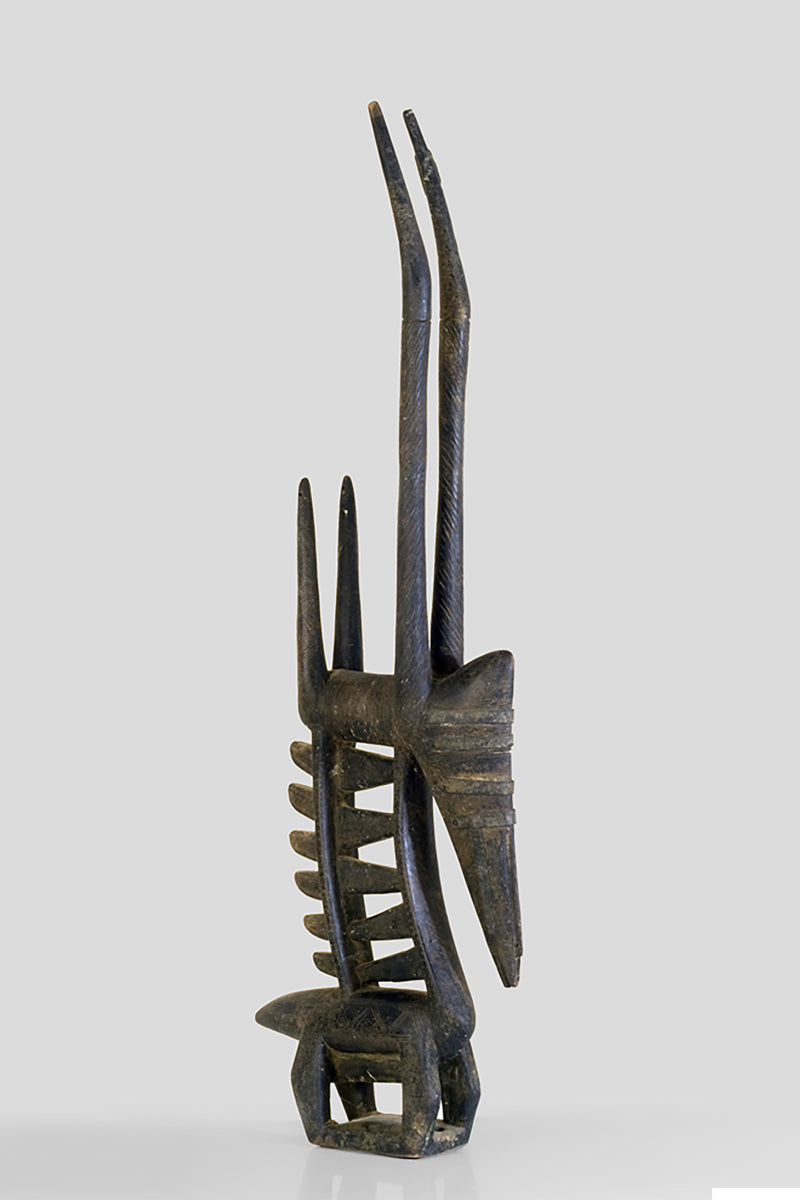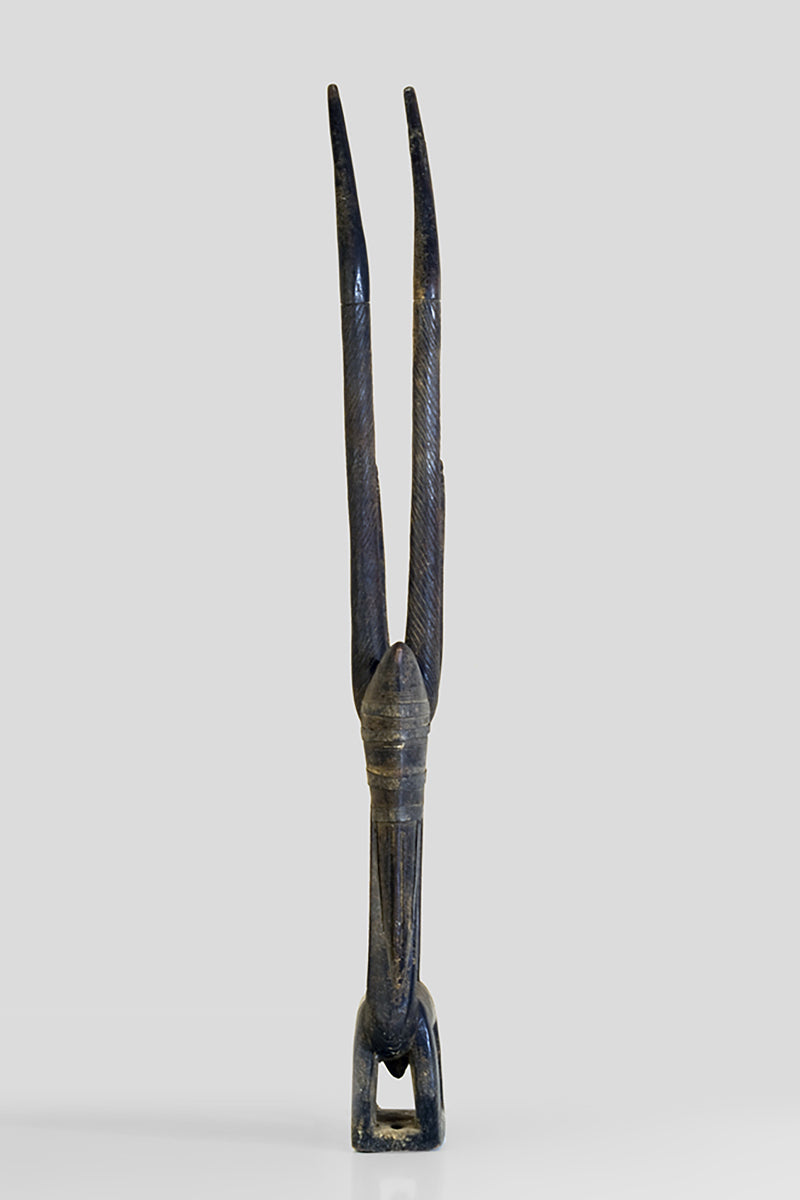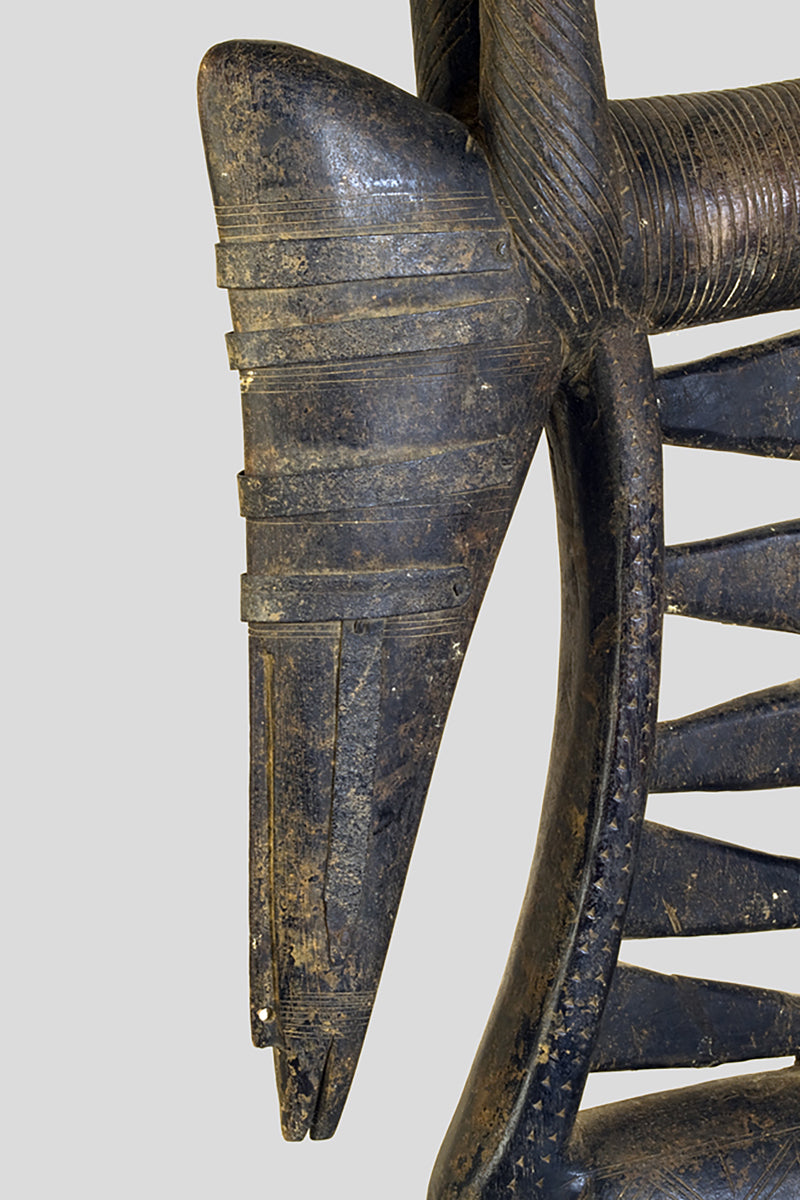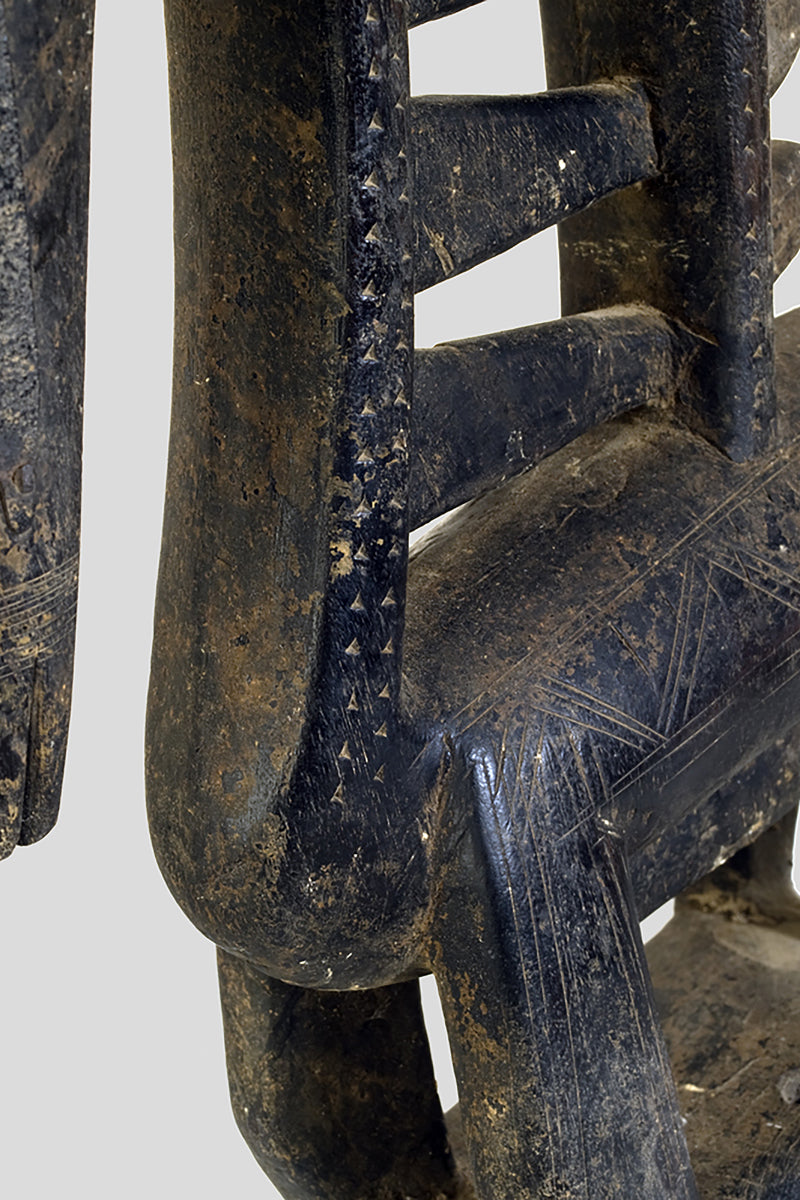Galerie Wolfgang Jaenicke
A Ci Wara couple
A Ci Wara couple
Couldn't load pickup availability
A Ci Wara couple of the Bougouni/Sikasso region, the head decorated with metal sheets, heavy, hard Lenke wood, collected in situ.
"The famous Ci-wara antelope-headdresses, objects of rare elegance, are among the world´s best known pieces of African Art. And ever since Captain Archinard´s shipment to the Musée d´Ethnographie du Trocadero in 1882 0f one such specimen, thousands of other Ci-wara exemplares have been acquired by private collectors and public institutions around the world. Pascal Imerato has provided a useful summary of the two main style-divisions os "Ci-wara heads: "There exist two pricipal sorts of Tyi Wara Koun among the Bambara: The vertcal and the horicontal. Within these groups one finds several sub-styles. The vertical forms are encountered in the east of Bambara country; the horizontal in the west." Imperato 1970, see also wolfgang jaenicke on youtube. about a Ci Wara Ceremony in Saro.
Ci Wara: The Dancing Antelope of Bougouni and Sikasso.
In the sun-drenched landscapes of southern Mali, in the regions of Bougouni and Sikasso, an antelope dances across fields and gathering places. But this is no ordinary animal. It is Ci Wara, a mythical creature revered by the Bamana people as the being who first taught humanity how to cultivate the earth.
According to tradition, Ci Wara was a half-animal, half-spirit hybrid—part antelope, part divine messenger. As a gesture of respect and gratitude, the Bamana developed an entire ritual system to honor this figure. At its heart is the Ci Wara headdress, a striking wooden sculpture worn atop the head during ceremonial dances.
The masks from the Bougouni and Sikasso region are known for their refined, vertical forms. Carved from wood and often adorned with iron or braided fiber, they depict stylized antelopes—sometimes fused with human or other animal features. Some masks come in male and female pairs, representing harmony and balance, just like the agricultural cycle they honor.
But Ci Wara is not only a mask. It comes alive through movement. During planting and harvest festivals, dancers take to the stage—heads crowned with the towering form of Ci Wara, bodies covered in raffia fiber that sways with each motion. Their choreography echoes the leaping grace of the antelope and the rhythm of farm labor. It is a dance of work, of community, and of spiritual continuity.
In Bougouni and Sikasso, the tradition remains active. The masks are more than objects of aesthetic value—they are social instruments, teaching lessons about diligence, cooperation, and respect for the land.
Today, Ci Wara masks can be found in museums and collections around the world. Their abstract, modern forms have influenced generations of artists, from early modernists to contemporary creators. Yet their true significance lies in their origin—as symbols of cultural knowledge, performed rather than displayed, lived rather than looked at.
The Ci Wara of southern Mali reminds us that art can be functional, that myth can guide practical life, and that dance can be a form of wisdom passed down through generation.
Height: 92 cm / 78 cm
Weight: 2,1 kg / 1,4 kg














